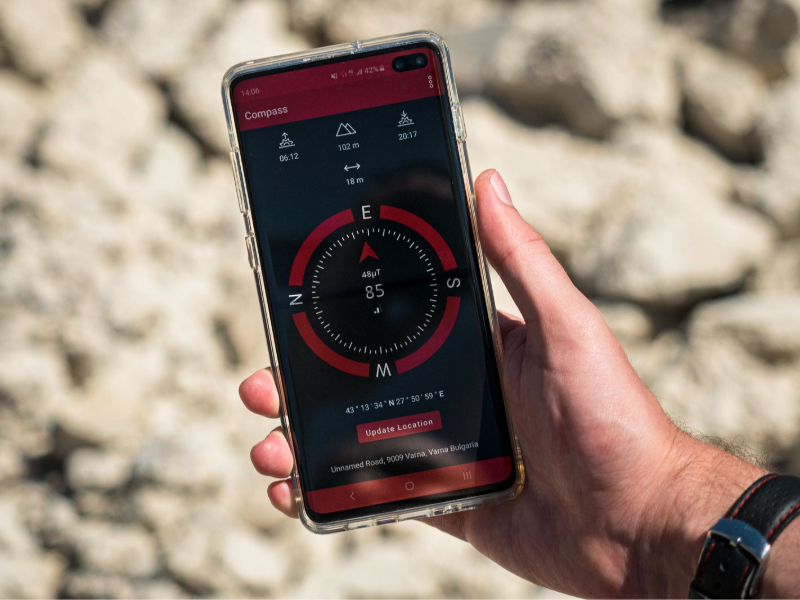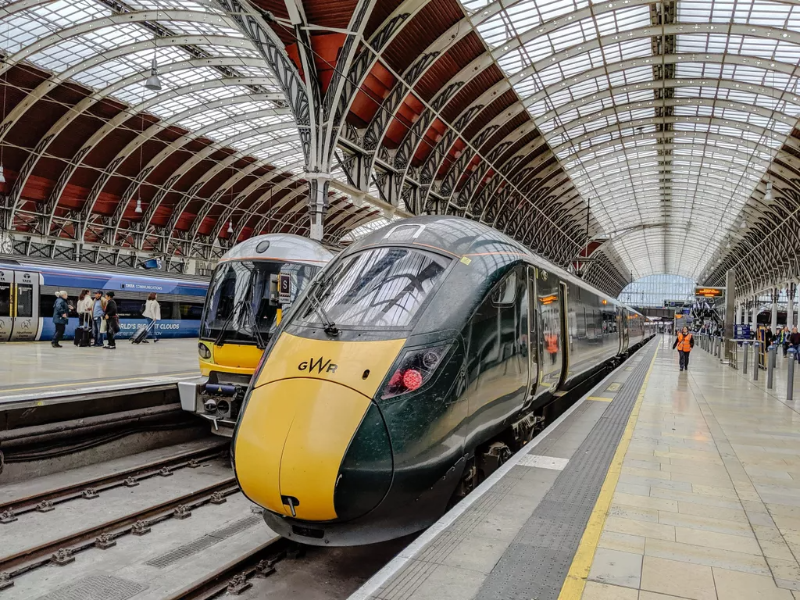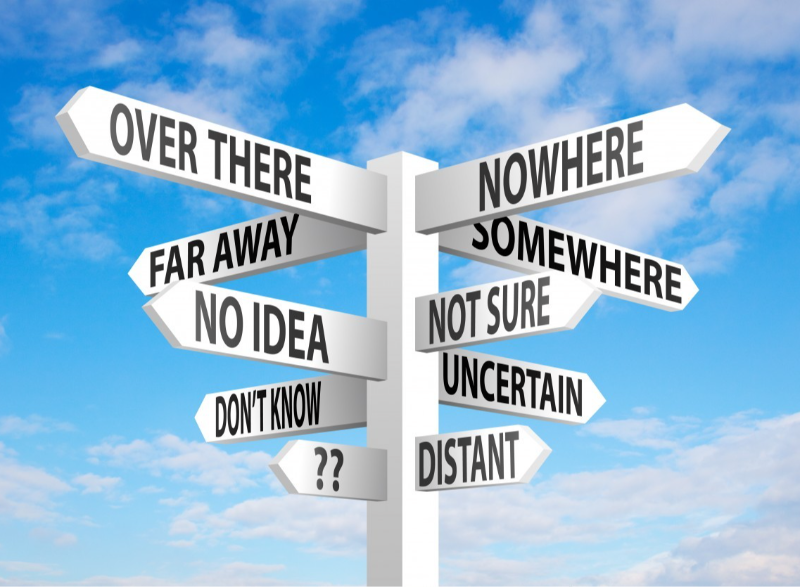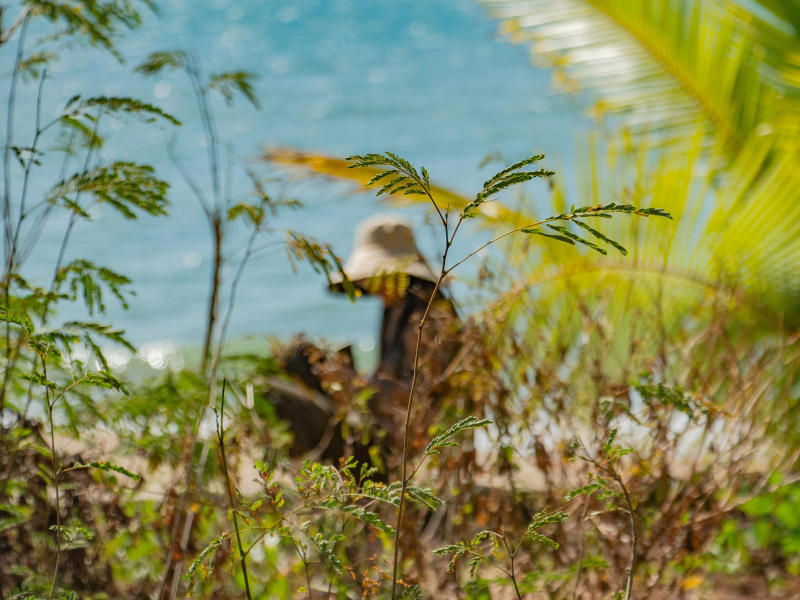
Exploring a new city solo is an adventure, but it can also feel overwhelming—especially when you’re worried about getting lost or navigating foreign cities. The good news? You don’t need a perfect sense of direction to make it work! With the right strategies and safety tips, you can confidently master any city, whether it’s a bustling metropolis like Tokyo or an easy-to-navigate small town.
This guide dives into practical ways to explore the
safest place for solo travel
, from harnessing basic navigation skills to developing a better sense of direction. You’ll also learn how to spot the safest places for solo travelers and when to trust your instincts.
Why Go Beyond Google Maps?
Sure, Google Maps or Waze can help you get around, but they won’t teach you how a city works. They miss the landmarks, nuances, and local secrets that make navigating feel intuitive. If you've tried relying on these apps in cities like New York, you might’ve noticed they can glitch near tall buildings or underground. Using your own skills, combined with tools like maps and instincts, provides a stronger, more flexible way to explore a city.
Here’s how you can confidently tackle even the hardest-to-navigate destinations.
1. Identify Landmarks and Logic
Understanding a city's cardinal directions is like holding a compass in your head—it simplifies everything. Begin by identifying a prominent landmark or geographical feature unique to the city. For example, in Toronto, Lake Ontario defines the southern boundary, and the iconic CN Tower, which sits near the lake, serves as an unmissable southern marker. Spot the tower, and you’re facing south; turn around, and you’re looking north. With the lake to the south, east is always to your right and west to your left. Another hack for navigating Toronto is knowing that Yonge Street divides the city into eastern and western halves.
Different cities have their own logic. For example, New York City relies heavily on its grid system, with avenues running north to south and streets running east to west. If you're near Central Park, you’ll know that it’s roughly centered in Manhattan and stretches north to south, serving as a great orientation anchor.
2. Use Your Phone’s Compass App

Finding your bearings is often the first challenge when you emerge onto an unfamiliar city street, especially from a multi-exit subway station or labyrinthine underground mall. This is where the compass app on your phone becomes an invaluable tool. If you're disoriented and unsure which way is north, south, east, or west, open the app to immediately recalibrate your sense of direction.
For example, imagine you’ve just stepped out of a metro station in Paris. The city does not follow a rigid grid system, so determining which way to walk isn’t always straightforward. Activate your compass app and compare it to a quick note you’ve saved from your research, like the cardinal direction of the city center or a nearby landmark. If you know that the Eiffel Tower lies southwest of your current location, you can align yourself and head in the right direction without unnecessary detours.
The compass app is also handy for spotting sun directions. If it’s early in the morning and the sun is in the east, or evening and it's to the west, you can use this as a natural guide when landmarks are out of sight. Practice using it a few times, and soon enough, it’ll feel like second nature, ensuring you never waste time wandering aimlessly in search of your destination.
3. Leverage Local Signage
Navigating European cities can be made much easier if you know how to decode their signage. Many cities prominently feature directional signs for the city center, using terms like “centrum” in Dutch and Scandinavian areas, “centro” in Italian and Spanish-speaking countries, “centre-ville” in French, “Zentrum” in German, or “Stadtmitte” in some other German-speaking regions. These words all point you toward the heart of the city, which is often rich with landmarks, major attractions, and transport hubs.
For instance, if you’re exploring Munich, you might spot signs marked “Zentrum” directing you toward Marienplatz, the city’s vibrant main square. Similarly, in Rome, following the “centro” signs will likely guide you closer to cultural treasures like the Colosseum or the Trevi Fountain. These signs are often strategically placed on highways, main boulevards, and pedestrian pathways to guide solo travelers seamlessly toward the most historically or commercially significant areas.
It’s not just city centers that are well-signposted. Some larger cities with sprawling suburbs may also include separate signs to guide you towards smaller local districts (“quartiers” in French locations, for example), which can help you orient yourself within a massive urban layout.
Another helpful tip is to combine your reliance on these signs with a mental note of local landmarks. If you can associate “centre-ville” in Paris with areas like the Seine River or landmarks like Notre Dame, the signs will feel less abstract and more meaningful. Whether driving, walking, or navigating public transportation, letting these signs guide your path is a straightforward way to feel grounded and confident in unfamiliar territory.
4. Research Transit Systems in Advance

Before arriving in a new city, doing your homework on the local transit system can save you time, money, and frustration. Every city has a unique transportation network, and knowing how it works allows you to move around confidently like a local, even in the most crowded and complex urban centers.
Start by visiting the city's official transit website, which often provides comprehensive details on schedules, routes, and fares. For example, in London, the Transport for London (TfL) website offers information on everything from Tube maps to payment options, while the MTA site in New York City can guide you through the subway system. If the website is in a foreign language, look for English translations or articles that break it down—many travel forums and blogs offer simplified instructions tailored to solo travelers.
One of the best ways to prepare is to study the transit map before you arrive. Highlight or make a note of the main lines or routes that connect your accommodation, popular landmarks, and other areas you’re likely to visit. For instance, in Paris, understanding how Metro Line 1 connects major attractions like the Louvre, Champs-Élysées, and Bastille can streamline your itinerary. Apps dedicated to public transit, such as Citymapper or transit-specific apps provided by the city, are also excellent resources. Download them in advance so you can explore route options offline.
Payment methods are another crucial detail to sort out. Some cities require specific transit cards—like the Oyster card in London or the Opal card in Sydney—which often provide cost savings over single-ticket purchases. Look for online purchasing options so you can order one before your trip, or locate where you can get them upon arrival. Check if the system accepts credit cards, mobile pay, or even cash to avoid scrambling at the ticket machine.
When using buses, trams, or other above-ground transports, sit close to the driver if possible. Not only can drivers provide real-time advice about stops and connections, but it’s also easier to ask for assistance if you’ve missed or misunderstood an announcement, especially when riding in countries where you may not know the local language.
Lastly, consider peak travel times. Public transport can become overwhelmingly packed during rush hour, leaving little room to learn the ropes in peace. If you’re nervous, plan to familiarize yourself with the system during quieter hours. Whether you're navigating the subway in Tokyo, the trams in Amsterdam, or the MRT in Singapore, a little preparation goes a long way in ensuring your transit experience is smooth and stress-free.
5. Create a Visual Breadcrumb Trail
Creating a photo trail as you explore a city is a simple yet powerful strategy for staying oriented, especially in places where the landscape or language can feel intimidating. By taking strategic pictures at key points in your walk, you can build a visual breadcrumb trail to help you find your way back or retrace your steps without stress.
Start by snapping a photo near your starting point—be it your hotel, hostel, or the entrance of a subway station. Focus on capturing something distinctive, like a bold sign, unique building, or a noticeable piece of public art. Then, as you walk through unfamiliar streets, take a photo at every intersection or turn. If you’re in a city with similar-looking streets or signage (like Venice or old neighborhoods in Madrid), make sure to include reference points in the photos, such as storefronts, street names, or larger details like fountains or statues.
For example, when navigating a sprawling city like Bangkok, where roads are often a tangled maze and signage can be overwhelming, photos of each turn can act as a mental reminder of how the streets connect. Similarly, in a city like Moscow, where Cyrillic signs might be difficult to decode,
a quick snapshot of road signs
, metro entrances, or even the surroundings of an obscure lane can simplify navigation when it’s time to head back.
The key here is using perspective. When taking your photo, turn around so you frame your return path. This way, you’re documenting the view you’ll see when walking back, not just moving forward. A shot looking down a particular street from the direction you came will make re-orienting yourself much easier.
Another handy feature is geotagging. Most smartphones record location metadata in photos, meaning you can pull up a map to see exactly where each photo was taken. Apps like Google Photos can even organize this data into a location timeline for quick navigation.
Lastly, remember to strike a balance. The aim is to create helpful waypoints, not photo spam. Choose standout features and avoid taking too many similar shots, as sorting through endless pictures when you’re lost can be just as confusing as being lost itself. Whether you’re strolling narrow alleys in Istanbul, wandering Tokyo’s bustling neighborhoods, or climbing the step-filled streets of Lisbon, this technique ensures you always have a guide—right in your camera roll.
6. Arm Yourself with Key Words
Always carry a few essential phrases or key pieces of information written down. Jot the names of locations or your accommodation’s address in English, followed by phonetic pronunciation and the proper local script. For instance, in Japan, having your hotel’s address in kanji can make asking for directions far easier than relying on Latin script. Simple phrases like “I need help” or “Where is ... ?” in the local language can save time and show respect. A small note in your pocket can be a lifesaver when translation apps fail or your phone runs out of battery, ensuring smooth communication and greater peace of mind.
7. Visit Tourist or Hotel Information Centers

Tourist information centers are goldmines for well-rounded guidance, whether you need detailed maps, expert tips, or walk-through recommendations. They’re often staffed by locals who know the area inside and out, and their insights can lead you to unique experiences or hidden gems not featured in travel guides. For instance, they might suggest less-crowded times to visit a historical landmark or inform you about a small, seasonal market happening nearby.
If finding a visitor center proves tricky, hotel concierges—especially those in upscale establishments—are another fantastic resource. Even if you’re not staying at the hotel, most staff are happy to help if you approach with a polite demeanor and genuine curiosity. A quick visit could get you insider advice, like the best spots to catch a sunset, or directions to an under-the-radar restaurant loved by locals.
8. Stay Proactive When Lost
Getting turned around in an unfamiliar place happens to even the most seasoned travelers, but how you handle it can make all the difference. Instead of standing still and looking overwhelmed—which might attract unwanted attention—stay calm and take action. First, step into a safe, visible area like a café, shop, or public building where you can collect your thoughts. Then, reach out to someone who seems approachable and trustworthy, such as a shop assistant, a family, or another traveler who looks confident in their surroundings.
When asking for help, be specific. For example, instead of saying "Where is the station?" try, "How can I walk to Central Train Station from here?" Using your pre-written notes or phrases in the local language can also make communication smoother. If language is still a barrier, point to the map on your phone or a paper map to clarify.
Staying proactive shows that you’re in control, even if you're temporarily disoriented. And often, these small interactions lead to unexpected kindness—like being personally guided to your destination or gaining a helpful tip about the area. This approach keeps you safe, focused, and ready to transition into the next stage of your adventure.
9. Observe First, Act Second
Before jumping into action in a new city, pause and take a moment to watch how locals go about their day. Observing the rhythm of daily life can provide essential insights and help you avoid unintentional missteps. For instance, notice if taxis are hailed on the street or booked online, or if buses require you to have exact change or a prepaid card. Watch how people order food at a café—do they pay first at the counter or sit down and wait for a server? These small details can save you from confusion or an awkward encounter.
Staying Safe as a Solo Traveler
Navigating a foreign city goes beyond direction—it’s also about ensuring your personal safety. Public spaces like tourist attractions, museums, and well-frequented areas are your best bet. Places that attract families or locals are often safe and welcoming too.
Here’s where to exercise extra caution as a solo traveler:
- Restaurants near transit hubs often draw pickpockets. Opt for spots a few blocks away.
- Remote hiking trails or empty neighbourhoods can feel risky if help is far away. Stick to areas with frequent passersby.
- Private spaces, like after-hours events or house parties, are less controlled. Trust people you’ve spent significant time with before stepping into private settings.
- Bars or music venues may be enticing but ask locals for insights on which spots are safe and welcoming for solo visitors.
Your Accommodation Is Your Safe Haven
Make your accommodation your most private and protected space. Avoid sharing your stay information with casual acquaintances or strangers. When asked, a vague response about “being with friends” is perfectly polite and protects your safe retreat.
Developing Your Sense of Direction

Think you don’t have the knack for directions? You might be surprised! Having a good sense of direction involves practice and, sometimes, a shift in how you think about space.
Egocentric vs. Geographic Directions
Most of us naturally give directions in egocentric terms, like “turn left” or “go straight.” But switching to a geographic mindset—using compass points—can sharpen your spatial awareness. For example, try saying, “Walk two blocks west, and you’ll find it on the north side.”
Practical Exercises to Sharpen Your Skills
- Practice identifying north, south, east, and west as you move through familiar areas.
- Challenge yourself with small mapping exercises, like creating a scavenger hunt based on compass directions.
- Notice natural and human-made landmarks (like bridges, hills, or statues) and integrate them into your navigation.
Over time, your instinct for direction will grow stronger. Combine this with the logic of a city, and getting lost will become a rarity—even in challenging destinations.
Easy-to-Navigate vs. Hard-to-Navigate Cities
Some cities naturally feel easy to navigate because of their structure, size, or public transport systems. For example, compact European city centers are intuitive. However, sprawling cities like Los Angeles or transportation-heavy areas like Tokyo might be hard to navigate.
Always focus on preparation—check maps before you leave, stay adaptable, and lean on your growing skills to succeed.
General Tips for Solo Travel Safety
Exploring a city solo means balancing adventure with basic precautions.
- Stick to crowded, public spaces as much as possible.
- Avoid neighborhoods or areas that don’t feel right—your instincts are often your best guide.
- Know safe places to spend time, like museums or buzzing cafés, where you’ll blend in easily.
Final Thoughts
Exploring new cities as a solo traveler can be one of the most enriching experiences of your life. Whether tackling a hard-to-navigate metropolis or enjoying a quaint town, these tips will help you explore with confidence and ease. By honing your navigation skills, practicing safety precautions , and developing a reliable sense of direction, you’ll be ready to truly enjoy every destination you visit.




